The world of business is a stage, and every customer interaction is a performance. This theatrical approach to entrepreneurship forms the foundation of Jason Friedman’s Kinetic Customer Formula. Jason, my guest on today’s show, is a former theater enthusiast turned serial entrepreneur who has founded and successfully exited five companies, earning accolades such as Ernst and Young’s Entrepreneur of the Year.
In this episode, Jason shares powerful strategies for crafting compelling customer experiences. Our conversation explores the parallels between theater and business, emphasizing the importance of understanding and truly engaging with your audience. Jason discusses how to remove friction points in your business, create memorable interactions, and build momentum through small wins. He also offers insights into the power of storytelling in business and the critical role of continual feedback and adaptation.
Learn how to turn every customer interaction into a standing ovation, driving growth and success in your entrepreneurial journey. If you’re ready to gain valuable tools to transform your business into a captivating performance that keeps your audience coming back for more, this episode of Marketing Speak is for you! So without any further ado, on with the show!
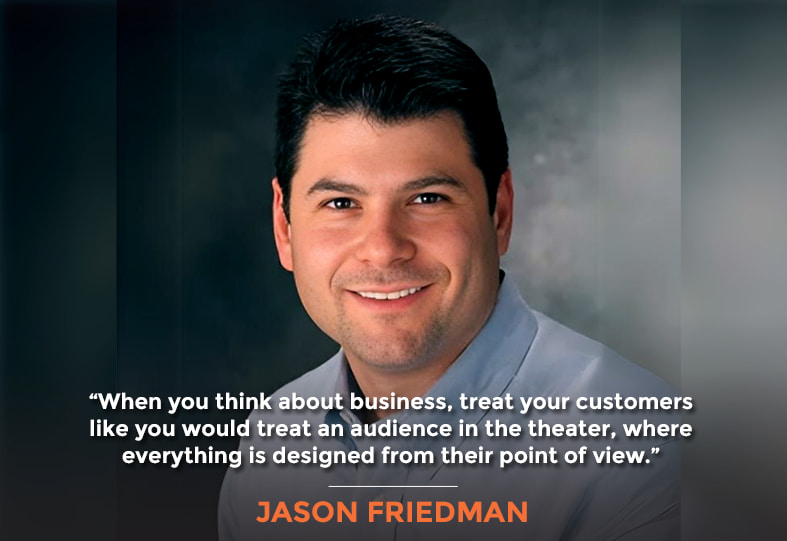
In This Episode
- [03:08] Stephan asks Jason Friedman to share his strategies for creating seamless presentations.
- [07:18] Jason recounts his superhero story from being in the theater industry to being an entrepreneur.
- [15:25] Jason talks about his current mindset in the realm of business tactics and strategies.
- [19:16] Jason explains his way of understanding customers through his theatrical experience and more.
- [23:32] Jason discusses how to set up a system that removes friction points and memorable and remarkable experiences for the customers.
- [41:20] Jason explains his kinetic customer formula, which views business interactions as a theatrical performance.
- [47:04] Jason’s gift for you.
Thanks for coming.
Thanks for having me, Stephan; this is awesome. Excited to talk today.
Yeah. I heard you speak at JVMM, a Joint Venture Mastermind run by Dov Gordon, a past guest on this podcast. I was just really impressed with what you had to share, and all the cool tech, little flair, and nuances of how you did all that were impressive. So it is not just the content—it’s the sizzle, too—that attracted me to invite you on the show. So, thanks for sharing your wisdom.
People do business with those they enjoy, trust, and feel a connection to.
I appreciate that. Yeah, a big shout-out to Dov. Amazing guy and an amazing group, JVMM. That’s why I get to meet great people like yourself, right? And I think that’s what all this is about. It’s about relationships. It’s about connecting with people. People do business with people they enjoy working with and buy from people they like working with, trusting, and feeling that connection to. So, I think that’s important in all of our businesses.
Right. That’s how it begins. So, yeah, I appreciate the kind words. It was a joy to share what we work on, and I’m excited to cut through some of that today.
Yeah, if you recall, I asked a question at the end about the setup and all the cool tech, and you shared some of the software and hardware you were using to make such a slick presentation. Do you want to share that again?
Yeah, I’m woefully underprepared because I’m not using it today. Right. So, I’m a little lower-tech today. But, you know, I use a VMix tool with many of my presentations online. And it’s pretty amazing software. But what it does is it gives me an opportunity to bring up slides next to myself, move things around, and share things more easily. It just allows me to make the journey that my participants and my presentation are going on a little bit more fluid and easier for them to follow what’s going on.
So, as I think about the journey that I wanna share with someone, what do I want them to know, what do I want them to do, and how do I want them to feel? I try to remove as much friction from that process as possible. These technological tools, like we’re mentioning, like VMix, allow that to help me make the journey better. Everything I do is focus on that.
I don’t use tech just for the sizzle. They may add a little sizzle and flare, but it’s really about making it more engaging so that things flow and feel good. Another cool thing that I use is called a Stream Deck. I don’t know if everyone listening is familiar with it. It’s been a life-changing gadget for me because it gives you these one-touch buttons that allow you to control things.
So, if I’m here by myself in the studio, which I am today, I have buttons, and I can raise my volume, I can lower my volume, I can change the camera, I can change slides, I can move what’s on the windows when I’m using VMix and stuff.
So, it gives me like one-touch control. So, as a presenter, I can be totally present with the audience I’m speaking with and still provide that experience. So, in my business and what I do, I try to find how I can make that experience as seamless, fluid, and non distracted as possible so that people stay more engaged, pay attention, and hopefully learn something. Those are my top two from that. I don’t know if I shared anything else on that, but I’ve got a bunch of little gadgets, toys, and tools in here, and I can go down a rabbit hole talking about gadgets all day long. But those are the two big ones.
What are a few more? I’m really curious. Cause you only shared those two, which were great.
We’re gonna go deep on gadgets. That’s cool. So what I’m looking at right now, the way I’m looking at you and seeing you, is through an Elgato Prompter. And so what this does is it allows the camera to be literally right behind a mirror. And you, your face, is on that mirror. So I’m looking at you, talking to you, but looking into the camera directly so the eye connection is better than looking like this; you can feel it’s slightly different. I’m talking, and your face is down lower or up higher, or it’s off to the left or the right or whatever. So this way, it allows me to be visually present with who I’m there.
So, I’m not using it to scroll text, but I’m using it to project the image of the person I’m speaking with. I love this so much. I’m in the studio today, but I have one of these on my work desk. So, if I’m just doing regular Zoom calls and meetings, I can also use that tool to be visually present with people. It’s super cheap. It was about $300, and it’s amazing. So it gives you an extra screen. Cause there’s a video screen and the mirror.
You just put whatever camera you can use—a webcam, a real camera, whatever. So that’s another one of my top ten favorite toys and tools. It adds a bit more when you can be visually present with the people.
So, yeah, that’s awesome. All right, maybe we should go into your origin story because I know you’ve got a great bio, and there’s a superhero story beneath that. How did you go from where you started to having multiple exits because of becoming Ernst and Young’s Entrepreneur of the Year and getting these companies onto the Inc. 5000 list? That was a journey. So, can you share a bit about that?
Everything I do focuses on what I want them to know, do, and feel.
Yeah. I don’t know that I would call it a superhero story. It makes me super uncomfortable to think of myself that way. I think of myself as a guide, a helper, a coach, a leader, a mentor, and then also as a student. So, like, we’re all learning every day. But that said, what happened for me, what showed up for me, was the world of theater. And so, at a young age, I was doing theater. This very short version of the story is that I was at a summer camp, and they had a camp show. They were doing a musical, and I was eight or nine years old at the time.
And one of my good friends was like, “I want to go audition for the show.” And I’m like, “I don’t know. I’m not going to do that.” He’s like, “Would you just come with me? I’m nervous.” I’m like, “Okay.” So I went with him, and he was at the playhouse, and he got up on stage, and his audition song was Happy Birthday. I’m sitting in the back, and there’s a whole line of kids of our age to the seniors in the camp, whatever their age. Right? 13 or 14. And they were all doing their thing.
Some were dancing, some were singing, and a guy in the back was building a set. He was building a flat that was going to become a backdrop for something. I just kind of got excited about that. And then, like, every so often, he’d run over to the lights, and he’d change some of the faders on the lighting board, and he’d adjust the knobs on the sound console. I was just mesmerized by what he was doing. So, I went deep into the backstage stuff. My friend got cast in the show, and I got cast on the stage crew.
So, for years, I was behind the scenes. I was a lighting guy, a scenic guy, and a prop. I did all those things. I ultimately went to school for lighting design. So I have a bachelor of fine arts in lighting design, a couple of minors, and what have you, but that was my degree. Then, I went on the road and toured with rock and roll groups like Rush, Peter Gabriel, and Fleetwood Mac. And then I went on to some more legit theater, like Les Mis, Jesus Christ Superstar, Man of La Mancha, and things like that.
So cool.
It was cool, fun, and amazing to be around the creativity and execution. The right brain and the left brain were pretty amazing. I just remember, because I was on the design creative side, I was assisting a lighting designer, and I was in, like, the design creative meetings, and they were talking about we were staging a show, right? So it was like the director, the producer, the stage manager, and the design team, we were all there and going through the script and talking about how we wanted the audience to feel at each step along the journey, what we wanted them to do.
So we designed all sorts of stuff, costume changes, sets, lights, and all sorts of things. How would we influence them to make sure that they did what we wanted them to do or that they felt what we wanted them to feel? I was like; this is crazy cool. I had done it in college, but it was different. It was at a different level of intensity. And then we had opening night, the previews, and they did it.
We wanted them to, like, cry and feel, like, sad at the moment, and they did, and we wanted them to jump out of their seats and clap at the moment, and they did. And I was like, “Holy cow, we created this, and they did it.” And then I started thinking, “I wonder if you could do that in business?” I got excited about that, and I wanted to try it. And so I had an opportunity to try that. My first client to do that was the Foot Locker. I was part of a team that did this. But we were inventing a store of the future. And it was around 1998, 1999.
Creating a winning culture doesn't have to be massive. Start finding wins and create that momentum. Share on XThe Internet and shopping online were just becoming a thing. You can even believe that it wasn’t always a thing, right? They were worried that they would lose all their sales because of these new online things. And so they wanted the store to have this potent, impactful vibe that helped people stay in the store, buy more, come back, and not even bother online. Cause this is too great.
So we did the same thing. We said, “What is that audience? What do they need to do? What has to be true?” So that’s what happens. So, we engineered an entire experience and tested it in a pilot location in Massachusetts, just outside of Boston, Watertown, Massachusetts. And we had amazing results.
We had a 400% increase in in-store sales, and it was like holy cow. And so they were like, “Well, that was a fluke. Let’s try it again.” So we did it again in Illinois, just outside Chicago and Oakbrook, and had the same basic results. 400% increase in sales. And then they’re like, all right, we need to try this one more time. So we did it right outside of New York City. So these are all markets, but just outside the main city.

We had the same results, and they’re like, “Holy cow, we’re going to roll this out.” So we rolled this out to thousands or over a thousand locations. It wasn’t thousands; it was over a thousand locations. And there were different levels of investment. So some were like a flagship store, and some were b, c, d, and e as we got to smaller markets, but the model was the same. And we had massive, massive success. My company was born out of that project. I ended up hiring 50 employees almost overnight, and boom, we just exploded.
We started working with all these big brands, like large companies, such as Bank of America, Armani, Disney, Universal Studios, and universities such as Stanford, Harvard, Yale, and Duke. How do we help them create that experience, but more importantly, the results? How do we help people create those kinds of results in those companies? We grew to be a very, very large company in a very short time because what we were doing was unique and special, and it was all powered by the learnings from the theater that came out of it. And when you think about businesses, most of us don’t treat our customers like we would treat an audience in the theater, where everything is designed for their point of view.
We look at all the site angles, like what they will see depending on their seat and how they will feel. What are they going to do? Everything is intentionally designed for them, for their reaction, and to get the desired result that we want them to have. In business, it’s really not that way with most companies. So what I help them do, businesses, small businesses now, because my passion is working with entrepreneurs, is I help them understand how to build this kind of operating system inside their business that helps them deliver these kinds of results for their customers.
We make way more progress when we’re in flow versus force.
It starts by understanding their customers way more deeply, just like we understand the audience. Then we start to build out the ecosystem or revise it so that it’s more tailored to that momentum that we want to build in taking their customers on that journey and getting to that result; it’s fun. People have massive breakthroughs because it’s a different way of looking at their business, and they get excited.
And for me, seeing the eyes light up on the entrepreneurs when they’re like, “Oh, my gosh,” I get it. We’ve been making it hard for our customers, which makes it easy. A lot of it is about shedding and removing, and we call it removing friction points. And so we all have these friction points in our business, and it’s like, how do we find where those are located, and how do we take them out or reduce them so it’s easier? And then there are lots of strategies and tactics.
We can go into some of those if you like, but that’s the basic premise. And so, my background is that I still do theater. It’s just a different form of theater than I used to when I was doing it on stage. Now, I do theater in companies so that we can create the best possible show that gets you a standing ovation at the end. It gets these radical results for your customers where they rave about their experience, return to buy more products and services, renew their memberships and subscriptions, and recruit others. They go out, find people, and bring them into your business because they’re so compelled to because they had such an amazing result, such an amazing experience that they can’t help it. They need to. And it’s just a fun place to be.
That’s so cool. You’re talking about how you went into theater as a kid. You just had this seemingly random experience watching somebody set things up with a. What’s that called?
The backdrop or whatever they were building up flat.
It just occurred to me that that was a divine setup.
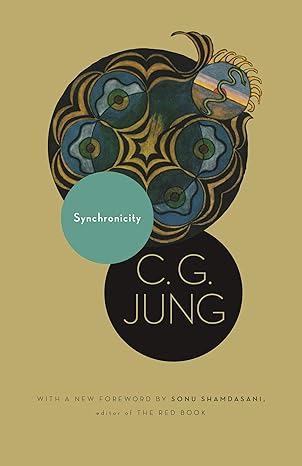
I believe that’s true, actually.
Totally rigged just for you.
Yeah. And I’m very much into that mindset now. I talk a lot. So, as we kind of delve out of the realm of hardcore business tactics and strategies, one of the things that I believe is that we make way more progress when we’re in flow versus force. That was one of those moments where flow, there was an opportunity, and I felt called to it, and I did it. I couldn’t have articulated it that way back then. And just yesterday, I had an amazing conversation with another amazing entrepreneur.
We just talked about this idea, and they were asking me, at these key breakthrough moments that I’ve had, right, what was the cause, or what was the impetus, like, what was happening at those times? And even as recently as a week ago, I was like, look, in the past, I had always built things by force, determination and grit and setting massive goals.
And I still believe you need grit, determination, and big goals. But the biggest shifts happened when I was in flow, when I was open, when I was receiving feedback and callings and information, and, you know, not to get too woo woo because I’m grounded, and I’m not grounded. I’m in both realms. Right. But I believe that when we, as entrepreneurs or humans, allow things to happen for us, lots of great stuff happens. And so, for me, big shifts happened when I was in flow, and that was, like, the first one that I can remember where this massive. It unlocked so many things for the rest of my life. And there’s just been a bunch of those moments throughout, and now I’m open to having many, many more of those and just letting them in.
Yeah. Synchronicity. That term was coined over 100 years ago by Carl Jung. He had a synchronicity moment that was so beyond normal odds that he decided to start researching it. He did a lot more research on these kinds of events, came up with a term for it, put out a book with that name, Synchronicity, and the rest is history.
Yeah. I love it. It is one of my favorite words. I have a list of a bunch of words that I love, and they create momentum and unlock things for me. So, yeah, I 100% love that.
Yeah.
How about you, man? You had one of those moments.
I get them all the time. All the time.
That’s awesome.
We can talk more about that, but let’s keep going with how our listeners can benefit from this amazing, storied theater experience and everything you have now imbued into business.
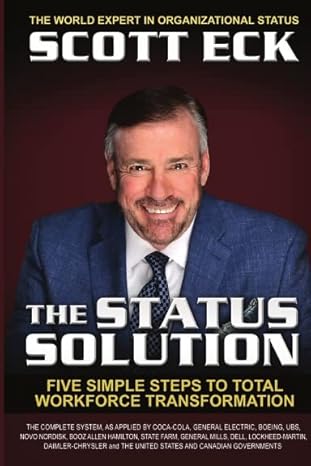
By the way, when you were talking about theater, it reminded me of another guest I had on the show a while back. His name is Scott Eck. He’s the author of The Status Solution. He would put on these theater events inside of companies, big companies. He’d call them leadership theater. He had one called the Shackleton Experience, based on the life of Ernest Shackleton, the polar explorer. He had another one based on Nelson Mandela called The Mandela Architecture, and how he came up with this whole blueprint when he was in prison.
It’s a really cool way to engage the leadership team so they can learn how to incorporate certain behaviors that leaders from the past, like Nelson Mandela and Ernest Shackleton, had, including grit and perseverance. By seeing that modeled in theater, they can powerfully demonstrate how to incorporate it into their business and life. What a cool, innovative way to convey that sort of stuff.
I love that. So when we talk about understanding your customers and the way we help people, that is almost exactly what you’re sharing, right? So, like, what you’re just saying is, by going through this theatrical experience and modeling what maybe Nelson Mandela would do or what have you, the idea that we share with them is, how do you get into character? How do you take on that role of your customers so that you can understand them deeply? We teach people how to do that.
If you think about movies and famous actors and things, like Robert De Niro or Matthew McConaughey or whoever, they’ve gone through extensive training on how to assume a role and a character and go through a deep process. It started out in the early 1900s with a gentleman named Stanislavski, who created the Stanislavski method and was Stanislavski’s assistant. Then there was method acting, which came out as a derivative of that later on, that these actors studied, and they go through these incredible experiences to become that character that you see on stage. So you’re not watching Robert De Niro. You’re watching whoever he’s taken on as a Persona.
He understood their life that morning when they woke up. He understands their dietary needs and their relationship with their children and grandchildren. So they understand him on such a deep level. And when you can do the same thing with your customers, really understand them, and then walk through your business journey as if you were them, looking at it through their lens, you can’t have breakthroughs. I always work through this with companies, and it’s that idea. So, if you can embrace some of that, we. And we all have it. You all have that play built into us, right? And it’s play.
It’s like playing and getting into character. It’s transformative. The other lesson from theater that you might take is really fun. I’ve done this with every single business I’ve ever had. I think saying everyone is a bit hardcore, but it’s been every. We do an improv training and bring in an improv instructor, which is the most uncomfortable thing for most of us. For me, it was. In college, I had to take an improv class in the theater department.
And as a nonactor, non-whatever, I was a backstage guy. Being in an acting class was painful and scary enough for me. There’s no script, nothing, and it’s all yes and listening and responding. Listening and responding. You learn how to listen in a different way when you go through that experience and learn how to be present in a different way.
We need to show clients the steps we take and where they are on that journey to make them feel at ease, excited, and motivated. Share on XSo, what’s another lesson we use more internally, like, when we think about our teams and communications and things like that? But learning that skill has transformed cultures in every business I’ve had and with clients when I teach them that skill also because it allows people to learn how to listen and be present in a very different way.
So, there are many powerful lessons from the theater that we can employ in business and in life.
Yeah. There are also incredible lessons; you mentioned some examples of actors who have mastered their craft, like Matthew McConaughey and Robert De Niro. And when you were talking about that, that prompted me to look up a quote that I was just like, oh, what was that quote from Matthew McConaughey? That was just so powerful. It’s a perspective shift on life, not just business, but all life. That’s why the arrow doesn’t seek the target. The target draws the arrow to it.
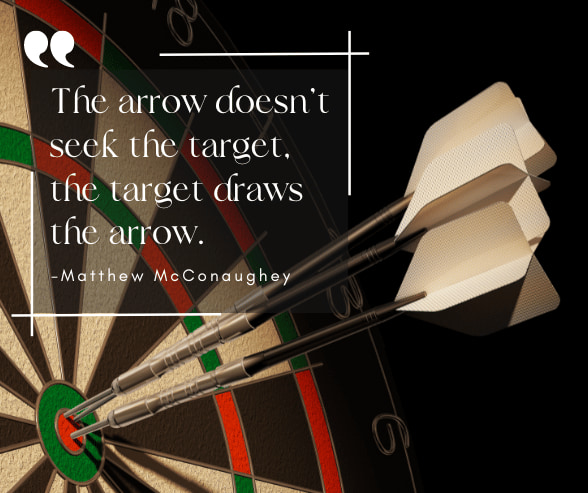
Yeah, that’s what I was saying earlier. Right. That’s how a lot of these things happen. You’re in flow shows up for you, and it attracts you to it. So, yeah, it’s powerful stuff.
Yeah. So cool. All right, if we’re to set up a system that removes friction points, creates a memorable, remarkable experience for the customer, and allows us to see how they engage with it, take that feedback, and then iterate and improve, what would that system look like? How do we build it? How do we see the world through your eyes and then put that into practice?
Thank you. That’s a very big and awesome question. So, let’s start. We know how to eat an elephant one bite at a time, right? Let’s just break that question down because it’s a big question. I believe that all progress starts by telling the truth.
That’s a great Dan Sullivan quote.
That is a Dan Sullivan quote. Dan has been my coach for over 14 years. Right.
Oh, wow. That’s cool. I recently interviewed him, and I’m excited for it to air.
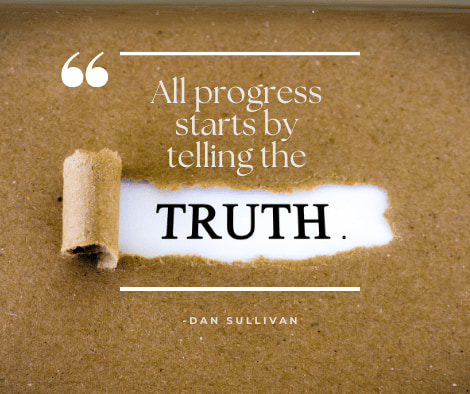
Send me a link when it’s out. I adore the man. He has changed my life and influenced me in so many ways. He’s been a mentor, a friend, and a coach. Adore him. And he’s right. In my opinion, all progress starts with telling the truth.
I think we have to be open and look at the business we’re doing today and the experience that our customers have and remove the defensiveness. And it’s hard to do. When people come through our programs, like we do these intensive workshops, we also have an online experience. But when people go through it, they get sad. They feel bad because they care about their customers so deeply. Most of the people who are attracted to our business love their customers. And then when they see what they’re creating friction, and they’re creating hard moments for them, they feel it, and they feel bad.
So you have to look at that experience. So I think, again, you just have to start with that framework of being very brutally honest. Right. And Jim Collins says “It is good to great. You have to confront the brutal facts.” Right? It’s that sentiment. You really do.
I want people to share their journey, and so I want people. We call this writing the ideal customer script.
You have to be open to that. But I believe that it starts at the end. What I ask people to do is, I want you to understand your avatar, but I want you to think about it. Suppose they went through this amazing journey with you if everything they wanted to have become true, and they got the results they wanted; what would they say to somebody?
They’re sitting on the airline, in the seat, on the plane, and someone asks them about it, or they go home and talk to their spouse; what would you want them to tell them about the experience? And most people think, “Oh, I lost 20 pounds. I went through Stephan’s program, and he teaches people how to lose weight. I lost 20 pounds.” And that’s awesome. Congratulations. High five. Right? But that’s not what we want people to do.
I want people to share their journey, and so I want people. We call this writing the ideal customer script. Because when words are critical, there’s a script behind them. Right? And so we want you to write that script for each of your avatars and each of the prototypical customers you have in your business.
I want you to write about their journey. Where did they begin? And their journey began before they knew you. Their journey began when they found a problem or an opportunity. They wanted to figure out how to do something or whatever that was. They had that scenario. I had been severely overweight for a long time, and I tried everything. I tried this program. I did Weight Watchers. I did this, I did that. I went to this coach. I had surgery. I’ve done everything. And it just doesn’t work for me. Then I found Stephan.
The way he talked about it was empowering in a way that I had never felt before. It felt different. I felt a shift.So, I decided that I was going to invest in his program. And from the moment I signed up, it was different. Like, I got my first win within 12 hours of signing up. For example, he helped me make immediate progress. And that started this unbelievable chain of events that happened every day. I woke up more committed, more committed, more committed. By the time I finished, I had lost 20 pounds. But that wasn’t the most impactful thing I thought that was gonna be.
Clients want what they want right when they want it. Meet their expectations promptly. Share on XBut the most impactful thing was that I started feeling good in my skin. Instead of sitting on the couch on Saturday night, I would go into my closet, which I was afraid of before. Nothing fits me. And now I had options. I called my friends to go out instead of saying, “No, I can’t go out. I’m busy.” As I shoveled the ice cream into my mouth, he single-handedly changed my life. If you’ve been struggling with this, you have to go to Stephan. It’s unbelievable. That’s what we want them to say. That’s the ideal customer script.
What that does is it starts to give us a roadmap. It’s the script that then, as I was saying, all the creative people were sitting there figuring out what we want the audience to do. We started to take that script and make it come alive. And so now we have the opportunity, once we have all these scripts for these avatars, we can create the journey that actually fulfills that script so that they will authentically deliver it. Does that make sense, where we’re gonna reverse engineer everything? But it starts with really getting clear on who that person is and what that result wants to be. And from there, sky’s the limit, right?
You asked earlier about how I experience synchronicity, and I told you it happens all the time. The definition of it is when your inner world synchronizes with the outer world; you think about somebody you haven’t spoken to in ten years, and as you’re thinking about them, the phone rings, and it’s them. Okay, that’s an example. I was having that just a minute or two ago.

Maybe I should bring up Joel Weldon, a recent guest, and how he sat in seat 1A 20 some years ago. It was 1982 or 84 or something like that. And he went through the entire story of how life-changing that was, how much weight he lost, how much health and vitality he gained because the guy next to him knocked the bread roll off of his tray and said, “You’re gonna eat that crap?”
And he went through every single thing that this was first class. So it was a really nice meal with dessert and everything. And Joel ended up eating nothing of that meal, even though he was addicted to drinking sodas and eating junk food and all that. That was the last time he had anything but water for the rest of his life. And he’s continuing to just show up with so much vitality and energy, and he’s in his eighties now.
He still water skis. He is living life and is an amazing speaker, motivator, coach, trainer, and friend. You know, he’s just an amazing dude. I met Joel in the Genius Network years ago,and he’s an inspiration. It’s the same kind of story, right? That’s what gets us to take action.
But how funny that I’m thinking in my head, maybe I should bring this up; maybe it’s relevant. And then you start talking about. And then Stephan is, you know, inspiring me to lose weight, and I’m something about an airplane, and, okay, I’m getting the clues. I’m picking up what you’re laying down.
I love it. Yeah. And it’s magical. So, I mean, I get it. We can talk about serendipity all day, too, wherever you want to go. But I want people, if the words matter, there’s a script. So, I want them to script those things because they matter.
Then, it gives us a blueprint, if you will, on how to create that experience. And the other thing that I think people need to understand when they’re kind of building this out, this experience, this journey, we call it the kinetic pathway that people go on. The most important thing is when people buy something from you when they purchase your services or your products, they decide that they’re going to work with you. They have an intention to get a result, but they’re not committed in most cases. So, what we have to do is get their commitment. We have to earn their commitment right away. That is not always the easiest thing in the world to do. Right.
We need to teach people how to identify what a win is, as many of us don’t fully understand it.
They want the result, but they’re not 100% committed. Like, we need them to make a vow. It’s a covenant between us, and we need them to do it, and we need to do it back to them, too. And it’s a real thing. And so the more that we can earn that commitment as quickly as possible, the more likely they will stay engaged, get to that end, and get that result. And so I think of myself as a guide. I think of myself as a host of people who come through it, and I am going to guide you through this experience. And when it gets hard, I’m going to pull, I’m going to help you, I’m going to shepherd you, but you have to give me that permission.
You have to commit to this, and I’m going to help you do it. It starts in the first moment. How do we earn that commitment? And then how do we make it easy? How do we make sure that they get value as quickly as possible? We call this time the first value. How do we shorten that amount of time? How do we compress time where they feel? Wow, I got a win.
Now, wins are the next really important thing. I was talking to somebody else from JVMM the other day, and they were talking about feedback loops; ironically, we were talking about feedback loops a little bit ago, and they were saying, like, “Oh, yeah, they get feedback all the time. They ask people, like, tell me the good, the bad and the ugly.” And I’m like, “Why are you putting bad and ugly in their mind? Don’t do that. Don’t do that. No, no, no. Don’t do that.” Right? Share your wins. Tell me what was amazing. Show me how this helps you. Like, we need to be teaching people how to identify what a win even is. Most of us don’t really understand what a win is.
I was talking to another entrepreneur the other day, and I was like, “You’re a badass. Tell me about the top three things that you’ve accomplished. “They were like, “I’m not a badass.” I was like, “You built a multimillion-dollar business. You have an amazing team. You have an amazing life. What do you mean you’re not?”
Well, wait a second. I think you said about 30 minutes ago I’m not a superhero. Didn’t you say that?
I don’t think of myself as a superhero. I do think of myself as a coach, a mentor, a leader, and a facilitator. Regarding the superhero thing, I have a hard time putting on the Superman suit. Right. Like, I do. So that’s something that I can work with.
If we don’t know where they’re stuck, we can’t fix it. We can’t remove the friction.
Do you see how relevant it is to what you were just saying? You know, we are all magnificent. We are all sparks of the creator. We are so, yeah, just own it.
My identity has not been a superhero yet. I’ll give you that, and I’ll put that on my list of things to ponder. But this person couldn’t share a win. They couldn’t share a win. And I was like, “Wow. And I know this person very well,” and I just rattled off ten that I knew of, and they’re like, “That’s a win?” I’m like,”Yes, that’s a win,” right? And we think of a win as I closed a million-dollar sale. Like, I did something massive, right? If you want to start losing weight, to use that analogy that we’ve been playing with, getting on the treadmill and just standing there today could be a win.
It doesn’t have to be this massive thing. Start finding wins, and then you will create momentum. And so I think that’s what we’re talking about. Like in time to the first value. How do we get somebody a win? If they don’t know what to look for and they don’t know how to identify a win, they’re not going to get it.
So, part of your role with people is in setting and managing expectations; I believe you have to show them what wins look like in your business on your journey, and then you can start giving them, helping them identify them, and you can train your team and your other customers and the community that you build whatever that happens to be, how to spot other people winning. It changes culture because when everybody wins, we feel differently. The energy shifts within the entire organization, the entire community, and the entire ecosystem around it.
And so that in itself, we teach people how to help them have won, but we have to start by, like, what is a win? Like in the online world right now, people are talking about show-up rates being horrible, right? I hear that all the time. I don’t know if you heard that.
Yes, I do.

In the digital marketing thing. And it’s like, what does show up mean? If you look at the television, nobody shows up at 8 o’clock to watch this show anymore. They put it on their DVR and watch it when it’s convenient for them. We’re obsessing over show breaks. The culture of the world has shifted. Show-up rates are different today, and people do not understand that. So, I think we have to redefine things for people so they can have a different lens and a context to look at them that serves them and helps them achieve results. So we spend a lot of time helping people with their language, with how they communicate about that, and putting different steps and pieces along the journey.
So that people can identify things, and it starts right in the beginning. It’s about setting and managing those expectations. It’s about getting value as quickly as possible and then starting a winning start to keep that momentum built throughout that journey. The most important thing is that people need to see their progress, and we need to see their progress. If we don’t know where they’re stuck, we can’t fix it. We can’t remove the friction. So we have to find ways to get that feedback so you can build that in. Do every step along your journey if you have ways to capture that.
And we need to do that. People need to see the mile markers. I remember driving in the car with my parents as a kid. It’d be like, “Where are we?” My dad was like, “Look at the mile marker. We’re like 2 seconds last from the last time you asked me, but you can see it.” And I started to look at that. I’m like, “What mile marker will it be when we get there?” And he’d give me a number, and then I could see where we were. I stopped asking that.
Customers want what they want when they want it. And so, in our businesses, we have to be mindful.
I was counting it down. I was excited to get to that mile marker because that’s where I wanted to be. We need to show them what those steps are along the journey, and they need to see where they are on that journey. When we do that, people feel at ease, excited, and motivated to get to that place because they can see where they’re heading. And so I think, like, I mean, I could spend hours giving the whole opportunity, but these are kind of the key steps that you have to put in place and start thinking about. And if it feels hard for someone, ask the question, like, “How can I make it easier? What can I do?” A lot of times, and I’m sure you agree with this, we have a lot of similarities in how we think about things. It’s up here that it’s making it hard. It may not be a physical thing that you have to take out.
It may be a motivational speech to give them before. It may be an expectation, and a framework that you need to set that shows them what’s just on the other side and that we’re about to go up this mountainous. But then it’s going to be easier, and here’s why and here’s how. And we’re going to support you, right? So, whatever happens to be in your business, you have to identify those things because those are the things that people will quit.
We’re on podcasts, and you had asked me if I had my show. I don’t have a show yet; hopefully, someday, it is something I’d love to do. Someone was sharing a great quote about podcasters with me. And this guy said he’s like, “90% of all people who start a podcast don’t get past episode three. Of the people that get past episode 3, 90 percent don’t get past episode 21.” And then he said, “if you don’t quit, you’ll beat 99% of everybody.”
And that’s true in most things in business. It’s why we see so many businesses failing and so few small businesses succeeding. It’s why we see it in podcasts. It’s why we see it in our own business as clients go through our journey.
Right. What’s the stat like? Only 5% of businesses survive ten years.
Yep. And it’s like breakthroughs are just on that other side most of the time. And so with our customers, we don’t want that. We don’t want them quitting. But our reptilian brain is wired to run away from danger. And if we feel lots of pain and frustration, that’s danger; we’re going to run away from it. So we have to do things to help them not get into that fight-or-flight place. And that’s why it’s a fight.
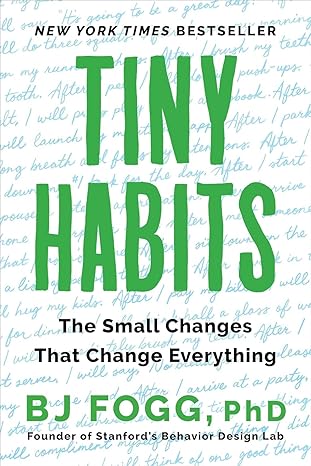
For example, help them find the right metric to track that sets them up to win. Instead of focusing on show-up rates, which are declining for almost everybody, focus on something like audience retention on the videos that you post to YouTube and see how that can improve by making iterative changes to the videos that you produce.
Yeah. And, thinking about your audience, they don’t want to show up. Just when you decided it was time to do the thing, they didn’t want that. And that’s not in every case, but that’s in a lot of cases. We’re all so busy, right? And so, by showing up, the world has changed. We have DVRs, Netflix, Hulu, whatever your streaming service is, and we can watch it when we want. And customers want what they want when they want it. And so, in our businesses, we have to be mindful.
That was just one example, and it’s a great one that you brought up. I think it’s awesome. So find a way to make it easier for your customers to have success and then teach them what success looks like because they don’t always know.
Super cool. You mentioned this kind of momentum or flywheel effect once you start getting some success and feeling that. I learned this term from BJ Fogg, a past guest who writes about it in his book Tiny Habits. It’s an emotion he gives the name shine to. Shine refers to that feeling of success, of progress. And if people don’t feel shine, they don’t stick with the habit. And so he starts really small with the tiny habit and builds, does habit stacking, and then builds on these small habits, like flossing one tooth. Don’t commit to flossing every night, your teeth for the rest of your life.
Just start really small by flossing one tooth, and that’s a success. That feeling of shine will get you through the next night and the next night, and you’ll keep building on that momentum. So, I’m curious to hear how you came up with this flywheel concept and how that shows up for you and your business.
Yeah, I mean, listen, BJ is also a huge inspiration to me. Like, I love Tiny Habits. I love James’s Atomic Habits as well. We use the same model. What we’re all trying to do is influence behaviors, right? And that’s what we’re really trying to do. So, in our formula, right, the Kinetic Customer Formula, we focus on attitudes, behaviors, friction, momentum, and results. Those are all the variables, right? And so what we are doing all the time is we’re really reverse engineering. We know what the results want to be.
We know what the behaviors to get those results have to be. From there, it’s like we have to make sure that their attitudes allow those behaviors to happen, right? And if those attitudes allow those behaviors to happen, are they strong enough to get past the friction? And that’s where we try to remove the friction and add, induce momentum, boost momentum, and use waze tricks and triggers, techniques, tactics, and strategies that will help them get through that, right? And so our whole business, like, that’s our entire business, that’s our whole model.
That’s the formula. That’s how we teach people to do it. And it’s all about that behavior. And we’re quite successful with all of our clients because once you see it, you can’t unsee it; you just can’t. It changes you. It changes your perspective.
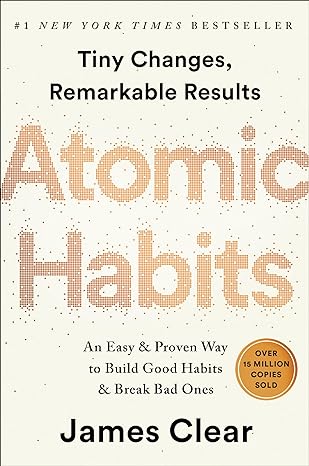
It shifts your perspective in such a powerful way that the framework that we show and give people to use is what they use it for. They start adopting it to do everything in their business. They use it as a way to understand every scenario because it’s just very clear. It creates a very clear visual. I flew out to London. Gosh, it was right before the 4th of July. I was going to be an American in London on the 4th of July. I was like, “Oh, this is dangerous”.
So I was there, and I did a workshop for this company, and yesterday, they had this transformational experience. They’re like, “Oh, my gosh, we understand our customers. We’re changing all these things.” And yesterday, I had a follow-up coaching call with them to see where they were going and how they were doing. And, you know, in the beginning, I was like, “all right, let’s share the wins.” And they started going through that, and they were blown away at how much they had accomplished and how excited they were, which was great. It’s a great way to start a call with anybody. I think your kids, too.
I don’t say to my kids, ” How was your day?” I’m like, “What three amazing things happened at school today?” And I get a response. I say, “How was your day?” It’s good. But just shifting that, it’s a whole different thing.
That’s a great tip, by the way. Anyone with kids needs to apply that.
If you have teenagers, it’s a game changer for conversation because it is very hard to get more than a grunt sometimes.
Yeah. So what’s the question again?
What three amazing things happened at school today? And they’ll be like, Well, and it could be as simple as I had fun at lunch. Okay, that’s great. As long as you acknowledge that it was amazing, that’s cool. I just want them to catch them. I want them to start identifying wins in the things they do. So I ask those kinds of questions, like, “What cool things happened when you hung out with Steve today?” Or whatever that is? I frame it a bit differently, and I honestly hadn’t connected that at one point to what I do in business. It was literally because I kept getting, it’s fine. Good. I don’t know, Dad. I’m watching my video. It’s all right. No. So anyway, the company I met with on that call yesterday said that our team has gelled so much.
Once you see it, you can’t unsee it; you just can’t. It changes you. It changes your perspective.
The CEO entrepreneurs. This was outrageous.They’re a remote team. They’re like, they’ve never been so connected and so on fire together. They have also started using this framework in other areas of the business. It’s empowered them and motivated them so much. Cause they get so much clarity so quickly. So I think that’s the thing. For example, when you can look at those, and they’re looking at it inside the company, they’re looking at it outside the company. I had another company that’s a global business, and the CEO of that company is like “Dude, this has been a great framework.” He’s like, “It’s like we’re using it everywhere.”
And so I think the power of this is it’s a framework that helps you focus, but it directs the focus at the person, the company. So whether it’s the customer or the employee, it directs it so that you can look at it through their lens, and that’s just powerful. So the tiny habits, why I said earlier, like, a win is standing on the treadmill. A win is doing one little thing. Like, it’s tiny habits. It’s a tiny win. And I would say he has the doing part, like standing on the treadmill or doing one. That’s amazing.
But now you have to know it’s a win. I won. I won. It’s one thing I did, made it, and is amazing. And now, you know, do that every day and keep doing it. We have a good friend working on a new project together, and she has this amazing journaling thing that she does with women. Every day, they have to write in their journal, and she just gives us some prompts. So they get a prompt every day.
They have to share wins from it in a group, and they have tens of thousands of wins, of the littlest wins in that, because they’re prompting people to think about that way. And they’re reprogramming their brains to see things differently. And it’s super powerful, and it’s unlocking other areas of their lives that were blocked in certain ways. And to watch that happening is just beautiful. It’s breathtaking to see all these people being so intentional about winning. And I don’t mean that in a competitive way. It’s just having positive results.
It’s not that they’re beating somebody else; they’re just winning. It’s just amazing to watch and experience.
Yeah, that’s awesome. All right, so I know we’re out of time. If you wanted to share one last wisdom nugget, something that we haven’t talked about yet, what would it be?
A win is standing on the treadmill or doing one small thing. It’s tiny habits and tiny wins.
Well, can I give your people a PDF gift?
Yeah, absolutely.
So, I have a PDF. If you go to gift.cxformula.com, you can download it. I won’t be spamming you and making you crazy with tons of emails. I wish I sent more emails. Maybe someday. But this asks you a powerful question, and it has transformed three of my companies and many relationships. It’s powerful. And it’s basically, I call it The Unreasonable Approach.
And what I want you to do is download this thing. Just read through it. Doing the whole thing will take you less than ten minutes, giving you a different question. So Dan Sullivan always said, like, “you can ask somebody a question, and they could ignore it and not, or they can respond to it, but they can’t ignore it.” It’s in their head. Right. It’s like an earworm of sorts.
That’s just kind of with you. This is one of those questions that’s been that for me and thousands of people I know that I’ve shared it with. So go grab that. It’s at gift.cxformula.com. Read it. And I would ask as a favor if you download it, when you download it, just read it. Don’t just let it sit on your hard drive and be one of those things that you’re like, “Okay, check. I did what he said.”
Go through it, invest a few minutes, and then just shoot me an email back and tell me what you think of it, how you applied it, and if you won. I want to hear about your win if and when you have one. And I’ve received more replies than probably anything else I’ve ever done because it helps people unlock and unblock certain things. So it’s my gift. You don’t have to email me. I would love to hear your feedback, though. It will help me help people more. That’s what I do.
That comes full circle from what we discussed before we hit record here. As I was telling you in response to your question, what are the biggest problems that your audience is facing? My listeners are facing, and I’m like, “Well, I never hear from them,” so I have no idea. And so we started talking about feedback loops and how to get feedback and stuff like that and planning what we discussed in the episode. And so we come full circle.
Yeah. Well, step one is to ask for it, right? You gotta ask for it.
Yes. So please, listener, email me. My email is [email protected]. Please drop me a line and let me know you actually listen to this show and that you get some value out of it. And what would you like to hear?
More than 100%, and do that, folks? Like, he’s doing a lot of work, I gotta say, like for eight years. And the names that you’re sharing of those who’ve been on your show are amazing. It’s amazing. I can’t wait to go listen to some of your other podcasts. I’m excited because these are mentors of mine, friends of mine, in some cases coaches, former coaches of mine, or, you know, Dan; I want to hear those episodes because I’m sure there’s gold. So yeah, shoot him an email. Do it. Do it now.
Thank you. All right. Well, we’re out of time, so if our listener, besides going to get that PDF at gift.cxformula.com, wanted to work with you and hire you and your team to assist with their own marketing and operations, how would they get in touch?
Yeah, yeah. Go to our website, www.cxformula.com. You can find out a little bit more about us if you want to engage with us. There are phone numbers, a contact form, and everything else. We’d love to hear from you, talk with you, and have a conversation. And, again, I think I’ve met some amazing people. If we can help you in some way, even through a conversation, that’s great. If there’s an opportunity to work together, that’s great.
We have online courses, training, and other things there. So come check it out and let us know what you think about the site, too. We’re always happy to get feedback.
Awesome. Well, thank you, Jason. And thank you, listener. I expect to see an email from you in my inbox. All right. We’ll catch you in the next episode. Have a fantastic week. In the meantime, I’m your host, Stephan Spencer, signing off.
Important Links
Connect with Jason Friedman
Apps and Tools
Books
Businesses/Organizations
Films/Musical Theatre
People
Previous Marketing Speak Episodes
Previous Get Yourself Optimized Episode
YouTube Videos
Your Checklist of Actions to Take











About Jason Friedman
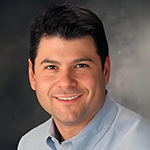 Jason Friedman is a former theater enthusiast who’s now a serial entrepreneur and coach dedicated to helping entrepreneurs and small business owners grow and scale their businesses. With a flair for dramatics and a master of storytelling, Jason has founded and exited five successful companies. Now, as CEO of CXFormula, he’s teaching businesses how to captivate their audiences using his proprietary Kinetic Customer Formula™.
Jason Friedman is a former theater enthusiast who’s now a serial entrepreneur and coach dedicated to helping entrepreneurs and small business owners grow and scale their businesses. With a flair for dramatics and a master of storytelling, Jason has founded and exited five successful companies. Now, as CEO of CXFormula, he’s teaching businesses how to captivate their audiences using his proprietary Kinetic Customer Formula™.
He’s also at the helm of Spotlight Brand Services, guiding e-commerce brands to success on Amazon and beyond. He is a leader whose strategies have earned him accolades like Ernst and Young’s Entrepreneur of the Year and propelled multiple companies to the top of the Inc. 5000 list.







Leave a Reply